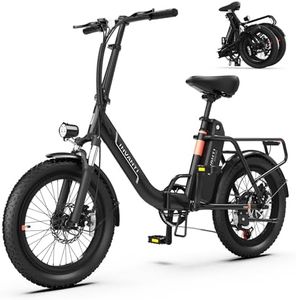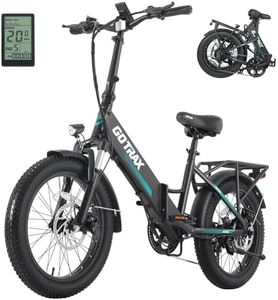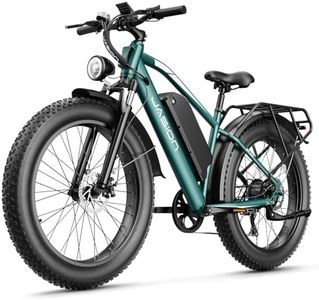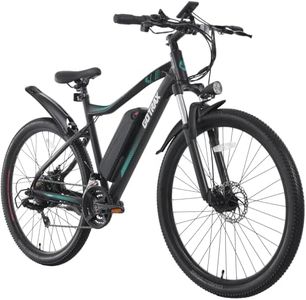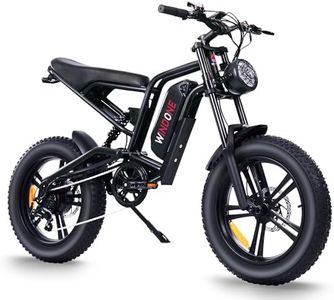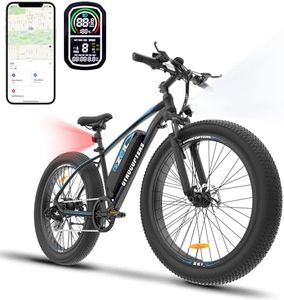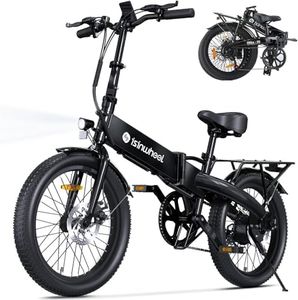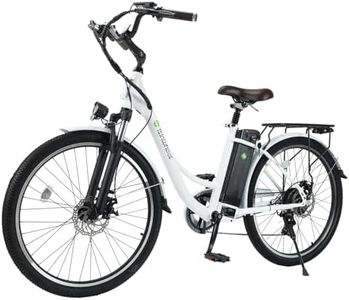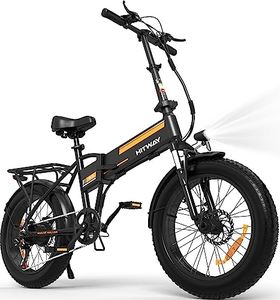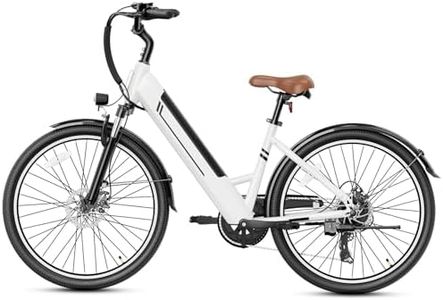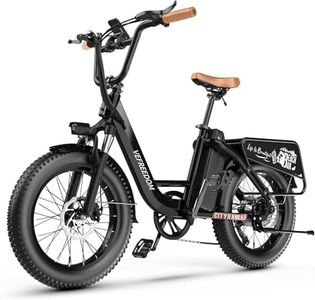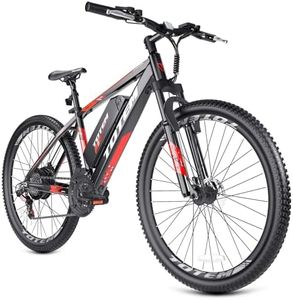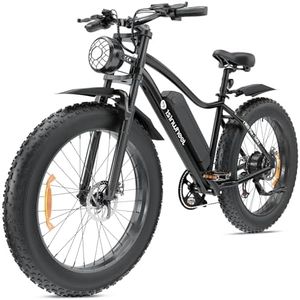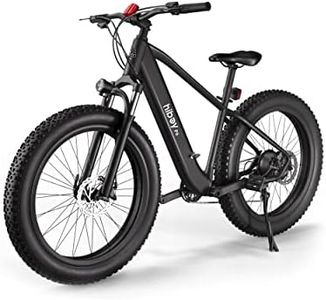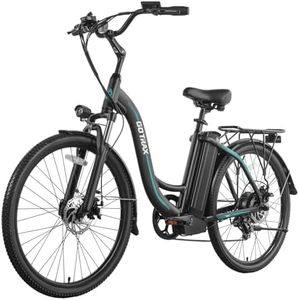We Use CookiesWe use cookies to enhance the security, performance,
functionality and for analytical and promotional activities. By continuing to browse this site you
are agreeing to our privacy policy
10 Best Electric Bikes
From leading brands and best sellers available on the web.Buying Guide for the Best Electric Bikes
Choosing the right electric bike (e-bike) can make a big difference in your daily commute, leisure rides, or even fitness goals. E-bikes come in many styles and with various features, so it's important to think about how and where you'll use the bike most often. Consider your typical riding distance, the terrain you'll cover, and how much effort you want to put in versus how much help you want from the motor. Understanding the key specifications will help you find an e-bike that fits your lifestyle and needs.Motor PowerMotor power, usually measured in watts (W), determines how much assistance the bike can give you when pedaling. Higher wattage means more power, which is helpful for climbing hills or carrying heavy loads. E-bikes typically range from 250W to 750W. Lower power (around 250W) is suitable for flat city riding and lighter riders, while mid-range (350W-500W) offers a balance for mixed terrain and moderate hills. Higher power (above 500W) is best for steep hills, heavier riders, or those who want a more effortless ride. Think about your local terrain and how much help you want from the motor to choose the right power level.
Battery CapacityBattery capacity, measured in watt-hours (Wh), affects how far you can travel on a single charge. A higher capacity means a longer range, but also adds weight to the bike. Typical e-bike batteries range from 250Wh to 700Wh or more. If you plan to take short trips or can recharge often, a smaller battery may be enough. For longer commutes or rides where charging isn’t convenient, a larger battery is better. Consider your average ride distance and whether you want to recharge daily or less often.
RangeRange is the estimated distance an e-bike can travel on one battery charge. This depends on battery size, motor power, rider weight, terrain, and how much you pedal. E-bikes can have ranges from 20 km (12 miles) up to 100 km (62 miles) or more. Shorter ranges are fine for city errands or short commutes, while longer ranges are important for touring or if you don’t want to worry about frequent charging. Match the range to your typical ride length, and remember that real-world range can be less than advertised if you use more motor assistance or ride on hilly terrain.
Bike Type and Frame StyleE-bikes come in different types such as city/commuter, mountain, folding, and cargo bikes. The frame style affects comfort, handling, and how easy it is to get on and off the bike. Step-through frames are easier for mounting and dismounting, while traditional diamond frames offer more rigidity and are better for sporty riding. Choose a bike type and frame style that matches your main use—commuting, off-road adventures, carrying loads, or easy storage.
Assist Levels and ControlsMost e-bikes offer multiple pedal-assist levels, letting you choose how much help you get from the motor. Some also have a throttle for motor-only riding. More assist levels give you finer control over speed and effort. If you want to get more exercise, look for bikes with lower assist settings. If you want a more relaxed ride, higher assist or throttle options are useful. Think about how much you want to pedal versus relying on the motor, and pick a bike with controls that suit your style.
WeightE-bikes are heavier than regular bikes due to the motor and battery. Weight can range from about 18 kg (40 lbs) to over 30 kg (66 lbs). Lighter bikes are easier to carry up stairs or lift onto racks, while heavier bikes may feel more stable but are harder to move without power. If you need to carry your bike or store it in tight spaces, consider a lighter model. If stability and comfort are more important, a heavier bike may be fine.
Brakes and SuspensionGood brakes are important for safety, especially since e-bikes can go faster than regular bikes. Disc brakes offer strong, reliable stopping power in all weather, while rim brakes are lighter but less effective in wet conditions. Suspension (front or full) helps absorb bumps, making rides more comfortable on rough roads or trails. If you ride mostly on smooth city streets, basic brakes and no suspension may be enough. For hilly or rough terrain, look for disc brakes and some suspension.
